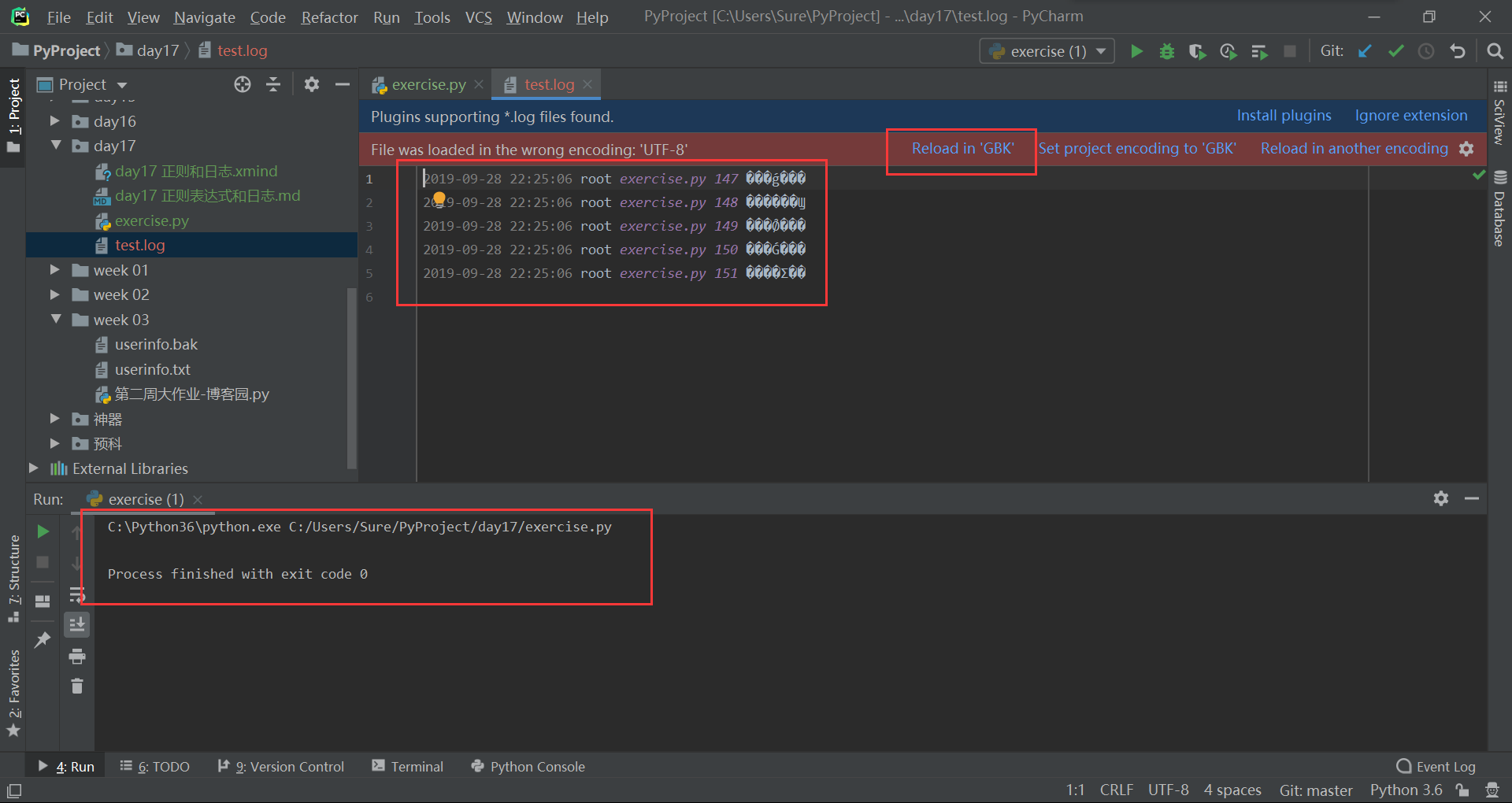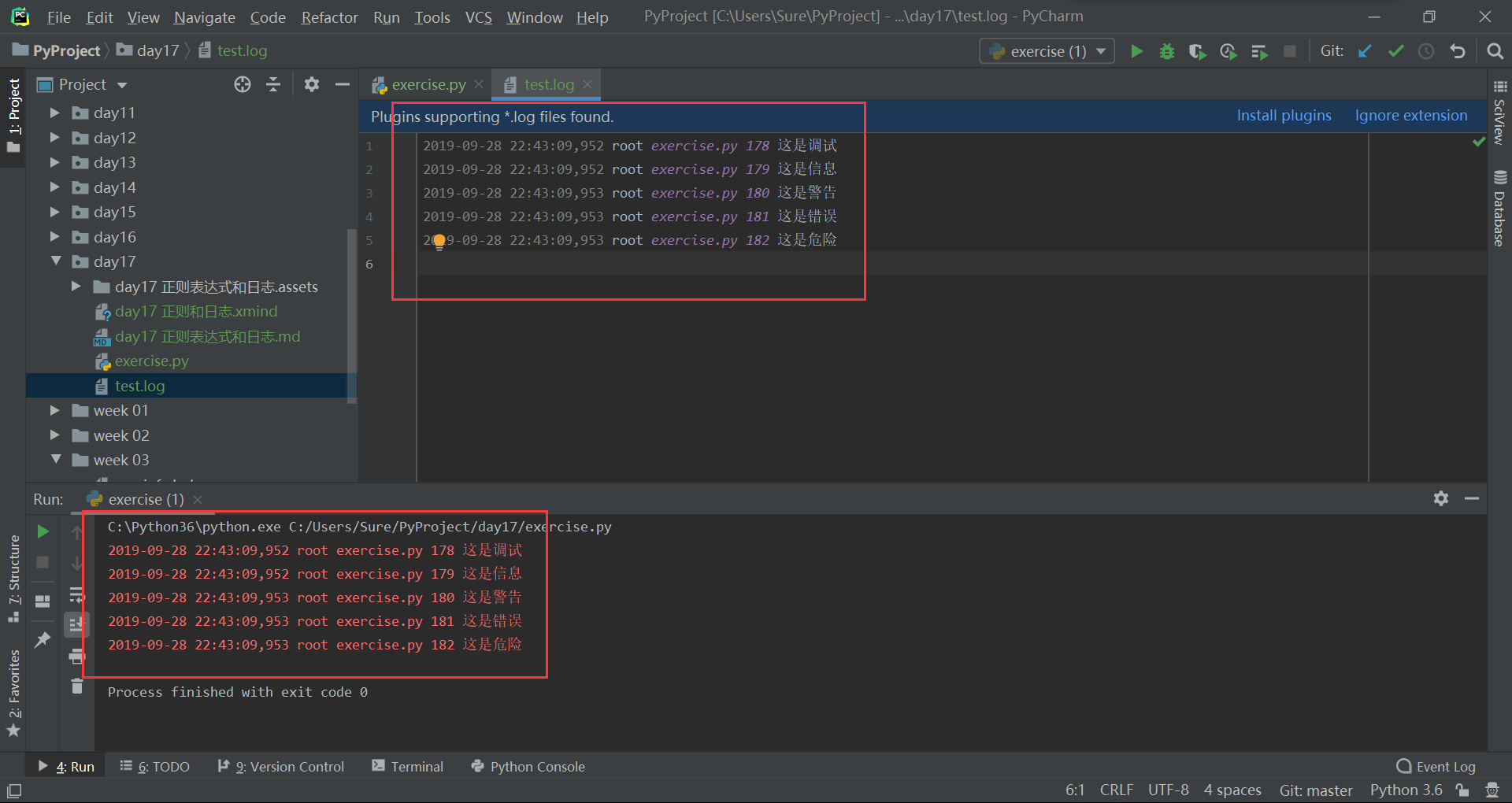logging 模块和日志
logging 也就是日志模块,其主要作用于有:
- 记录程序运行的状态(时间,文件名,报错行数,错误信息);
- 用户的喜好(分析用户的一些喜好和操作);
- 银行(账户流水)。
日志一共分为五个级别:
| 序号 | 错误名 | 含义 | 级别 |
|---|---|---|---|
| 1 | debug | 调试 | 10 |
| 2 | info | 信息 | 20 |
| 3 | warning | 警告 | 30 |
| 4 | error | 错误 | 40 |
| 5 | critical | 危险 | 50 |
一般情况下,日志默认报告级别在 30 以上的事件。
基础版日志
基础版的日志是 Python 已经写好了的,可以直接调用:
import logging
logging.basicConfig(
level=10,
format="%(asctime)s %(name)s %(filename)s %(lineno)s %(message)s",
datefmt="%Y-%m-%d %H:%M:%S",
filename='test.log',
filemode='a', )
logging.debug('这是调试')
logging.info('这是信息')
logging.warning('这是警告')
logging.error('这是错误')
logging.error('这是危险')窗口中没有打印出任何信息,日志全部被写入到文件 text.log 中。但是因为编码默认是 gbk,所以中文出现了乱码。虽然可以通过更改编码读取文件,但是基础版的日志是没有办法指定编码方法的。

有了日志之后,我们可以通过日志的方法与用户交互,而避免报错:
import logging
logging.basicConfig(
level=10,
format="%(asctime)s %(name)s %(filename)s %(lineno)s %(message)s",
datefmt="%Y-%m-%d %H:%M:%S",)
num = input('请输入数字:')
try:
num = int(num)
print(num)
except ValueError:
logging.warning('字符串不能强行转换成数字!')输出的结果为:
请输入数字:a
2019-09-28 22:30:56 root exercise.py 165 字符串不能强行转换成数字!基础版日志调用非常方便,但是有两个缺点:
- 编码默认为 gbk,且不可修改;
- 屏幕显示和文件存储不能同时有。
因为这两个缺点,我们更常用的是进阶版的日志。
进阶版日志
进阶版日志是我们自己组装实现的,是通过二次开发获得的,其基本用法为:
import logging
logger = logging.getLogger() # 创建一个空架子
fh = logging.FileHandler('test.log', mode='a', encoding='utf-8') # 创建一个文件句柄,用来记录日志(文件流)
ch = logging.StreamHandler() # 创建一个屏幕流,打印记录的内容
f_str = logging.Formatter('%(asctime)s %(name)s %(filename)s %(lineno)s %(message)s') # 定义一个记录日志的格式
logger.level = 10 # 设置日志记录的级别
fh.setFormatter(f_str) # 给文件句柄设置记录内容的格式
ch.setFormatter(f_str) # 给中控台设置记录内容的格式
logger.addHandler(fh) # 将文件句柄添加到logger对象中
logger.addHandler(ch) # 将中控台添加到logger对象中
logger.debug("这是调试")
logger.info("这是信息")
logger.warning("这是警告")
logger.error("这是错误")
logger.critical("这是危险")这次屏幕和文件中都出现了日志信息,且中文也不需要转编码即可正常显示。

类封装版日志
将进阶版日志封装到类中,可以直接写到文件里。
有一点要注意的是,settings 中的配置为:
BASE_DIR = os.path.dirname(os.path.dirname(__file__)) # 项目根目录
LOG_DIR = os.path.join(BASE_DIR, 'log') # 日志文件的存放目录日志处理文件的写法为:
import logging
import os
from conf import settings # 从外部导入 setting.py 文件
class LogHandler:
def __init__(self, log_file_name: str):
log_path = os.path.join(settings.LOG_DIR, log_file_name)
self.logger = logging.getLogger() # 创建一个空架子
fh = logging.FileHandler(log_path, mode='a', encoding='utf-8') # 创建一个文件句柄,用来记录日志(文件流)
ch = logging.StreamHandler() # 创建一个屏幕流,打印记录的内容
f_str = logging.Formatter('%(asctime)s %(name)s %(filename)s %(lineno)s %(message)s') # 定义一个记录日志的格式
self.logger.level = 10 # 设置日志记录的级别
fh.setFormatter(f_str) # 给文件句柄设置记录内容的格式
ch.setFormatter(f_str) # 给中控台设置记录内容的格式
if not self.logger.hasHandlers(): # 防止多次实例化对象,重复添加日志句柄
self.logger.addHandler(fh) # 将文件句柄添加到logger对象中
self.logger.addHandler(ch) # 将中控台添加到logger对象中
def debug(self, message): # 调试
self.logger.debug(message)
def info(self, message): # 信息
self.logger.info(message)
def warning(self, message): # 警告
self.logger.warning(message)
def error(self, message): # 错误
self.logger.error(message)
def critical(self, message): # 危险
self.logger.critical(message)